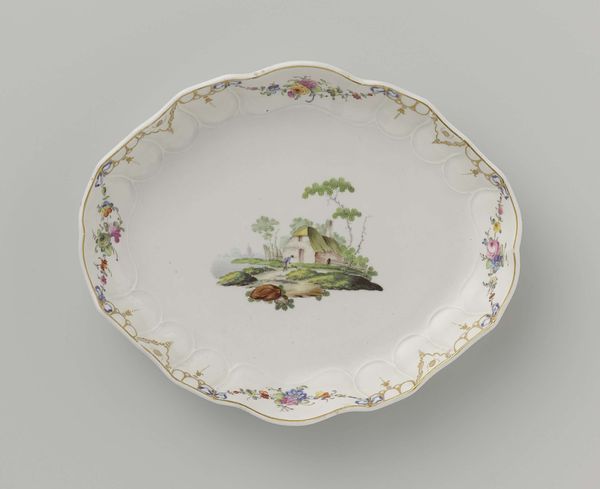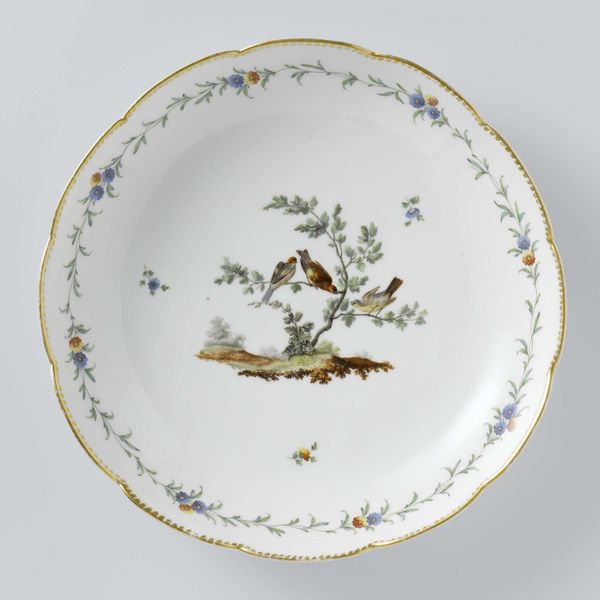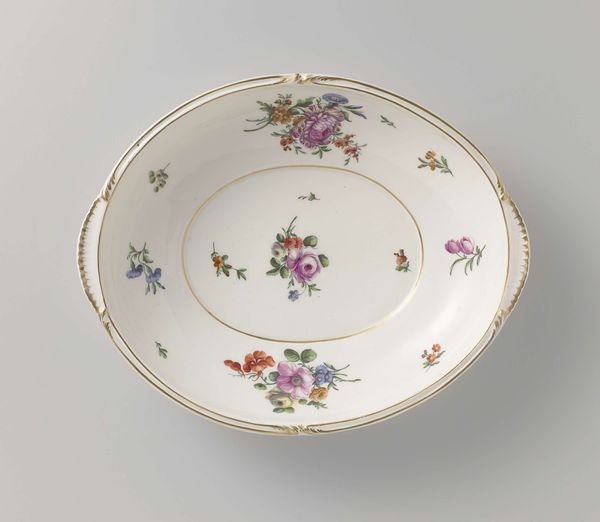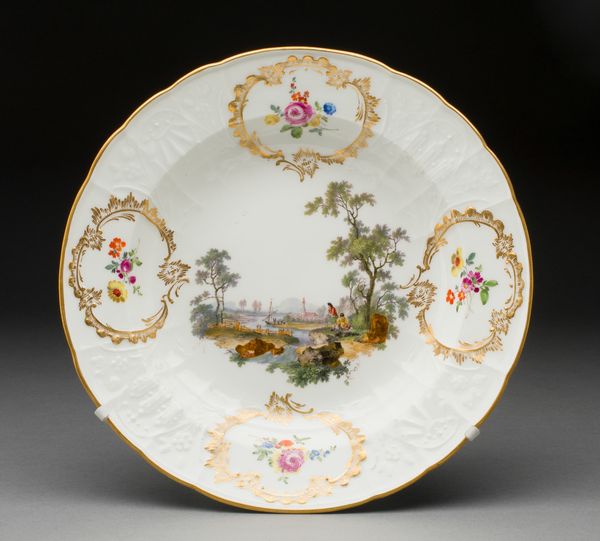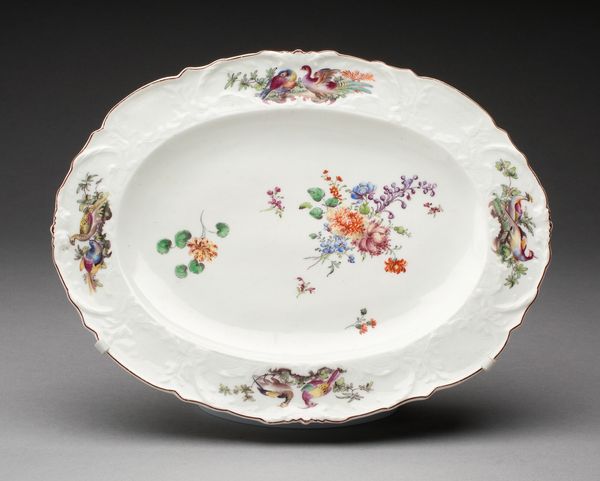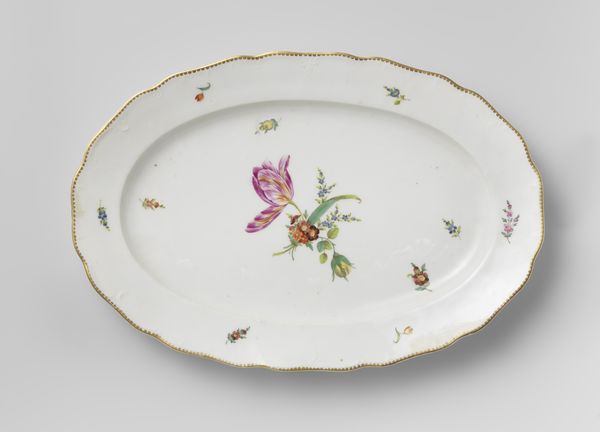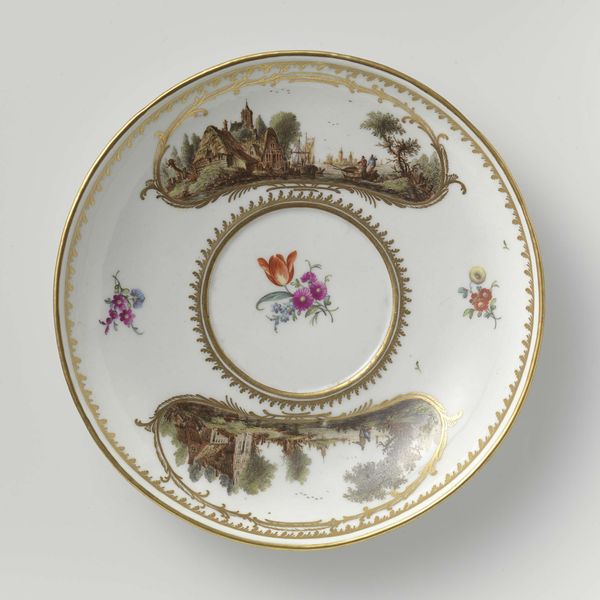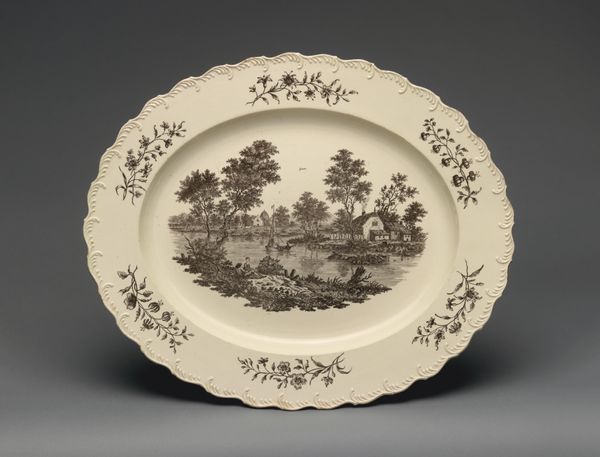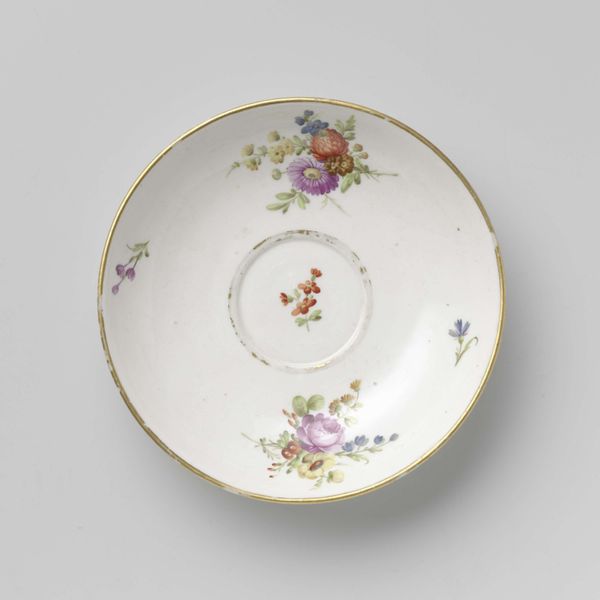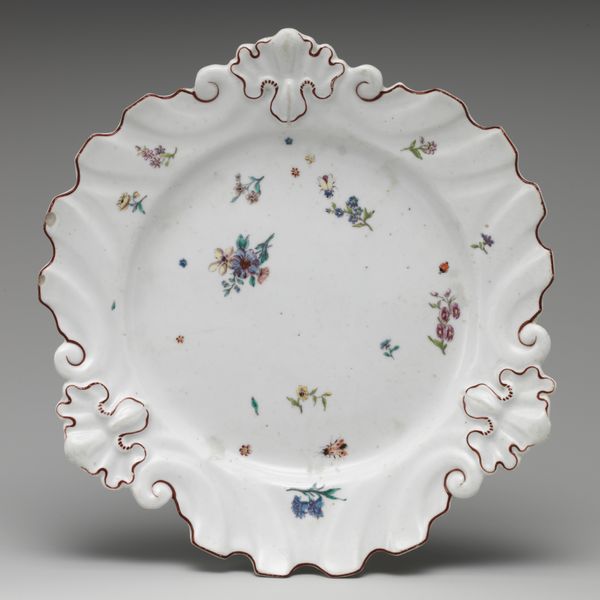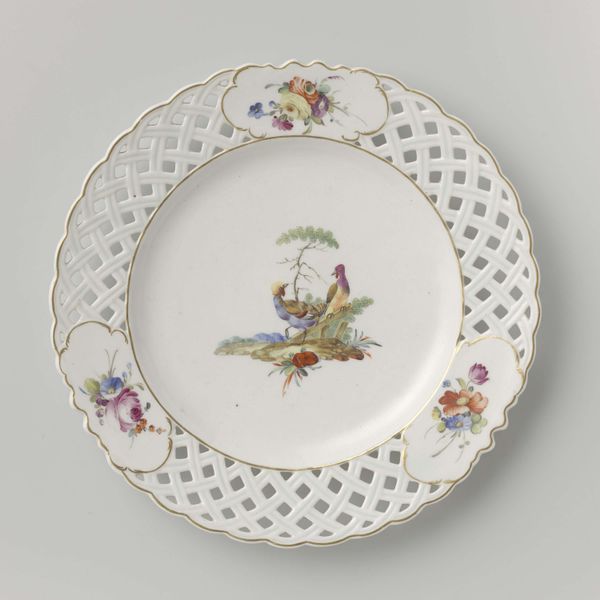
Dimensions: height 4.1 cm, width 24 cm, depth 19.3 cm
Copyright: Rijks Museum: Open Domain
Editor: So, this is an oval dish, dating from between 1777 and 1790. It was made by the Porseleinfabriek Den Haag. What strikes me is this idyllic scene painted right in the middle, very folksy. What do you make of it? Curator: The imagery here is quite deliberate, evoking a sense of pastoral nostalgia. The windmill is a particularly potent symbol; it represents not just rural life, but also ingenuity, industry, and perhaps even a subtle claim to national identity during that era. What feelings does the placement evoke in you? Editor: It feels very central and comforting, like a little world. But it is a common image; you see windmills everywhere here in the Netherlands! Curator: Exactly. It's about taking that very common image and turning it into a symbolic object of national pride. Notice also how the landscape, rendered with delicate brushstrokes, contributes to this constructed image of an idealized Dutch countryside. How does the floral border amplify this effect? Editor: It frames it all in something very precious, very deliberately crafted. Like you want to preserve something about the countryside inside of this piece of ceramic. Curator: Precisely. The maker deliberately placed familiar images to speak to contemporary anxieties. A manufactured landscape preserves memory, tradition and comfort. What do you think it tells us? Editor: It is very striking, really, how everyday imagery can carry so much emotional and cultural weight, when displayed like this! It's something I'll definitely look at in other works going forward. Curator: Indeed! I too learned seeing how folks art, when strategically applied to daily objects, takes on an amplified significance to both culture and nationhood.
Comments
No comments
Be the first to comment and join the conversation on the ultimate creative platform.
